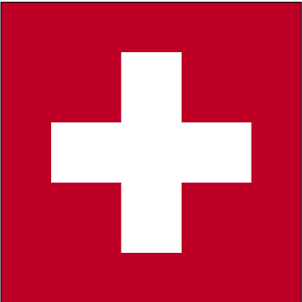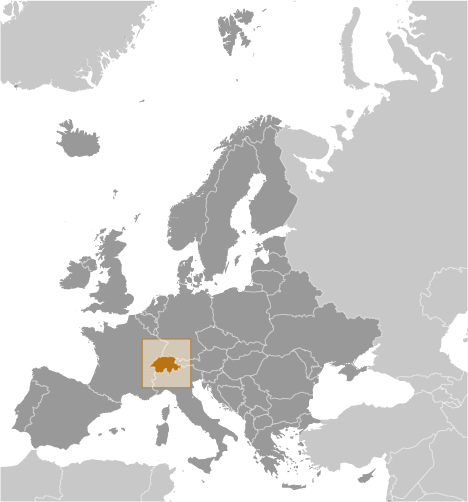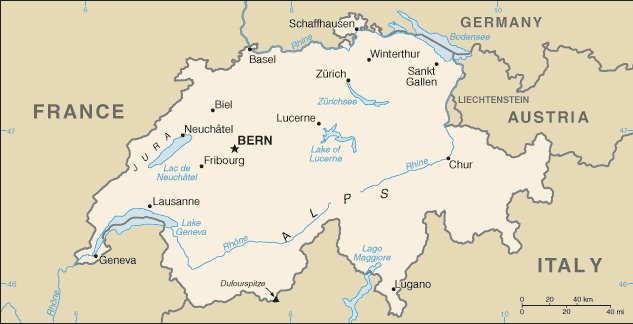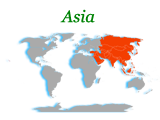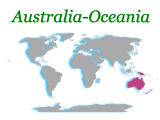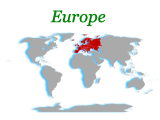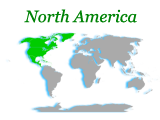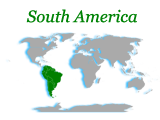The Swiss Confederation was founded in 1291 as a defensive alliance among three cantons. In succeeding years, other localities joined the original three. The Swiss Confederation secured its independence from the Holy Roman Empire in 1499. A constitution of 1848, subsequently modified in 1874, replaced the confederation with a centralized federal government. Switzerland's sovereignty and neutrality have long been honored by the major European powers, and the country was not involved in either of the two World Wars. The political and economic integration of Europe over the past half century, as well as Switzerland's role in many UN and international organizations, has strengthened Switzerland's ties with its neighbors. However, the country did not officially become a UN member until 2002. Switzerland remains active in many UN and international organizations but retains a strong commitment to neutrality.
Population
7,623,438 (July 2010 est.)
Country comparison to the world:94
Nationality
Noun:Swiss (singular and plural)
Adjective:Swiss
Ethnic groups
German 65%, French 18%, Italian 10%, Romansch 1%, other 6%
Religions
Roman Catholic 41.8%, Protestant 35.3%, Muslim 4.3%, Orthodox 1.8%, other Christian 0.4%, other 1%, unspecified 4.3%, none 11.1% (2000 census)
Languages
German (official) 63.7%, French (official) 20.4%, Italian (official) 6.5%, Serbo-Croatian 1.5%, Albanian 1.3%, Portuguese 1.2%, Spanish 1.1%, English 1%, Romansch (official) 0.5%, other 2.8% (2000 census)
note: German, French, Italian, and Romansch are all national and official languages
Country Name
Conventional long form:Swiss Confederation
Conventional short form:Switzerland
Local long form:Schweizerische Eidgenossenschaft (German); Confederation Suisse (French); Confederazione Svizzera (Italian); Confederaziun Svizra (Romansh)
Local short form:Schweiz (German); Suisse (French); Svizzera (Italian); Svizra (Romansh)
Government Type
formally a confederation but similar in structure to a federal republic
Capital
Name:Bern
Geographic coordinates:46 57 N, 7 26 E
Time difference:UTC+1 (6 hours ahead of Washington, DC during Standard Time)
daylight saving time: +1hr, begins last Sunday in March; ends last Sunday in October
Administrative divisions
26 cantons, singular - canton in French; cantoni, singular - cantone in Italian; Kantone, singular - Kanton in German); Aargau, Appenzell Ausser-Rhoden, Appenzell Inner-Rhoden, Basel-Landschaft, Basel-Stadt, Bern, Fribourg, Geneve, Glarus, Graubunden, Jura, Luzern, Neuchatel, Nidwalden, Obwalden, Sankt Gallen, Schaffhausen, Schwyz, Solothurn, Thurgau, Ticino, Uri, Valais, Vaud, Zug, Zurich
note: 6 of the cantons - Appenzell Ausser-Rhoden, Appenzell-Inner-Rhoden, Basel-Landschaft, Basel-Stadt, Nidwalden, Obwalden - are styled half cantons because they elect only one member to the Council of States and, in popular referendums where a majority of popular votes and a majority of cantonal votes are required, these six cantons only have a half vote
Independence
1 August 1291 (founding of the Swiss Confederation)
National Holiday
Founding of the Swiss Confederation, 1 August (1291)
Constitution
revision of Constitution of 1874 approved by the Federal Parliament 18 December 1998, adopted by referendum 18 April 1999, officially entered into force 1 January 2000
Legal system
civil law system influenced by customary law; judicial review of legislative acts, except with respect to federal decrees of general obligatory character; accepts compulsory ICJ jurisdiction with reservations
Suffrage
18 years of age; universal
Executive branch
Chief of state:President Doris LEUTHARD (since 1 January 2010); Vice President Moritz LEUENBERGER (since 1 January 2010); note - the president is both the chief of state and head of government representing the Federal Council; the Federal Council is the formal chief of state and head of government whose council members, rotating in one-year terms as federal president, represent the Council
Head of government:President Doris LEUTHARD (since 1 January 2009); Vice President Moritz LEUENBERGER (since 1 January 2009)
Cabinet:Federal Council or Bundesrat (in German), Conseil Federal (in French), Consiglio Federale (in Italian) is elected by the Federal Assembly usually from among its members for a four-year term
(For more information visit the World Leaders website)
Elections:president and vice president elected by the Federal Assembly from among the members of the Federal Council for a one-year term (they may not serve consecutive terms); election last held on 2 December 2009 (next to be held in December 2010)
Election results:Doris LEUTHARD elected president; number of Federal Assembly votes - 158 of 183; Moritz LEUENBERGER elected vice president; number of Federal Assembly votes - 128 of 187
Legislative branch
bicameral Federal Assembly or Bundesversammlung (in German), Assemblee Federale (in French), Assemblea Federale (in Italian) consists of the Council of States or Standerat (in German), Conseil des Etats (in French), Consiglio degli Stati (in Italian) (46 seats; membership consists of 2 representatives from each canton and 1 from each half canton; members to serve four-year terms) and the National Council or Nationalrat (in German), Conseil National (in French), Consiglio Nazionale (in Italian) (200 seats; members elected by popular vote on the basis of proportional representation to serve four-year terms)
Elections:Council of States - last held in most cantons in October 2007 (each canton determines when the next election will be held); National Council - last held on 21 October 2007 (next to be held in October 2011)
Election results:Council of States - percent of vote by party - NA; seats by party - CVP 15, FDP 12, SVP 7, SPS 9, other 3; National Council - percent of vote by party - SVP 29%, SPS 19.5%, FDP 15.6%, CVP 14.6%, Greens 9.6%, other 11.7%; seats by party - SVP 62, SPS 43, FDP 31, CVP 31, Green Party 20, other small parties 13
Judicial branch
Federal Supreme Court (judges elected for six-year terms by the Federal Assembly)
Political Parties and Leaders
Green Party (Gruene Partei der Schweiz or Gruene, Parti Ecologiste Suisse or Les Verts, Partito Ecologista Svizzero or I Verdi, Partida Ecologica Svizra or La Verda) [Ueli LEUENBERGER]; Christian Democratic People's Party (Christlichdemokratische Volkspartei der Schweiz or CVP, Parti Democrate-Chretien Suisse or PDC, Partito Democratico-Cristiano Popolare Svizzero or PDC, Partida Cristiandemocratica dalla Svizra or PCD) [Christophe DARBELLAY]; Radical Free Democratic Party (Freisinnig-Demokratische Partei der Schweiz or FDP, Parti Radical-Democratique Suisse or PRD, Partitio Liberal-Radicale Svizzero or PLR) [Fulvio PELLI]; Social Democratic Party (Sozialdemokratische Partei der Schweiz or SPS, Parti Socialist Suisse or PSS, Partito Socialista Svizzero or PSS, Partida Socialdemocratica de la Svizra or PSS) [Christian LEVRAT]; Swiss People's Party (Schweizerische Volkspartei or SVP, Union Democratique du Centre or UDC, Unione Democratica de Centro or UDC, Uniun Democratica dal Center or UDC) [Toni BRUNNER]; and other minor parties
Political pressure groups and leaders
NA
International organization participation
ADB (nonregional member), AfDB (nonregional member), Australia Group, BIS, CE, CERN, EAPC, EBRD, EFTA, ESA, FAO, FATF, G-10, IADB, IAEA, IBRD, ICAO, ICC, ICCt, ICRM, IDA, IEA, IFAD, IFC, IFRCS, ILO, IMF, IMO, IMSO, Interpol, IOC, IOM, IPU, ISO, ITSO, ITU, ITUC, LAIA (observer), MIGA, MONUC, NEA, NSG, OAS (observer), OECD, OIF, OPCW, OSCE, Paris Club, PCA, PFP, UN, UNCTAD, UNESCO, UNHCR, UNIDO, UNITAR, UNRWA, UNTSO, UNWTO, UPU, WCO, WFTU, WHO, WIPO, WMO, WTO, ZC
Diplomatic representation in the US
Chief of mission:Ambassador Urs ZISWILER
Chancery:2900 Cathedral Avenue NW, Washington, DC 20008
Telephone: [1] (202) 745-7900
FAX:[1] (202) 387-2564
Consulate(s) general:Atlanta, Chicago, Los Angeles, New York, San Francisco
consulate(s): Boston
Diplomatic representation from the US
Chief of mission:Ambassador Donald S. BEYER, Jr.
Embassy:Sulgeneckstrasse 19, CH-3007 Bern
Mailing address:use embassy street address
Telephone:[41] (031) 357 70 11
FAX:[41] (031) 357 73 44
Flag description
red square with a bold, equilateral white cross in the center that does not extend to the edges of the flag; various medieval legends purport to describe the origin of the flag; a white cross used as identification for troops of the Swiss Confederation is first attested at the Battle of Laupen (1339)
